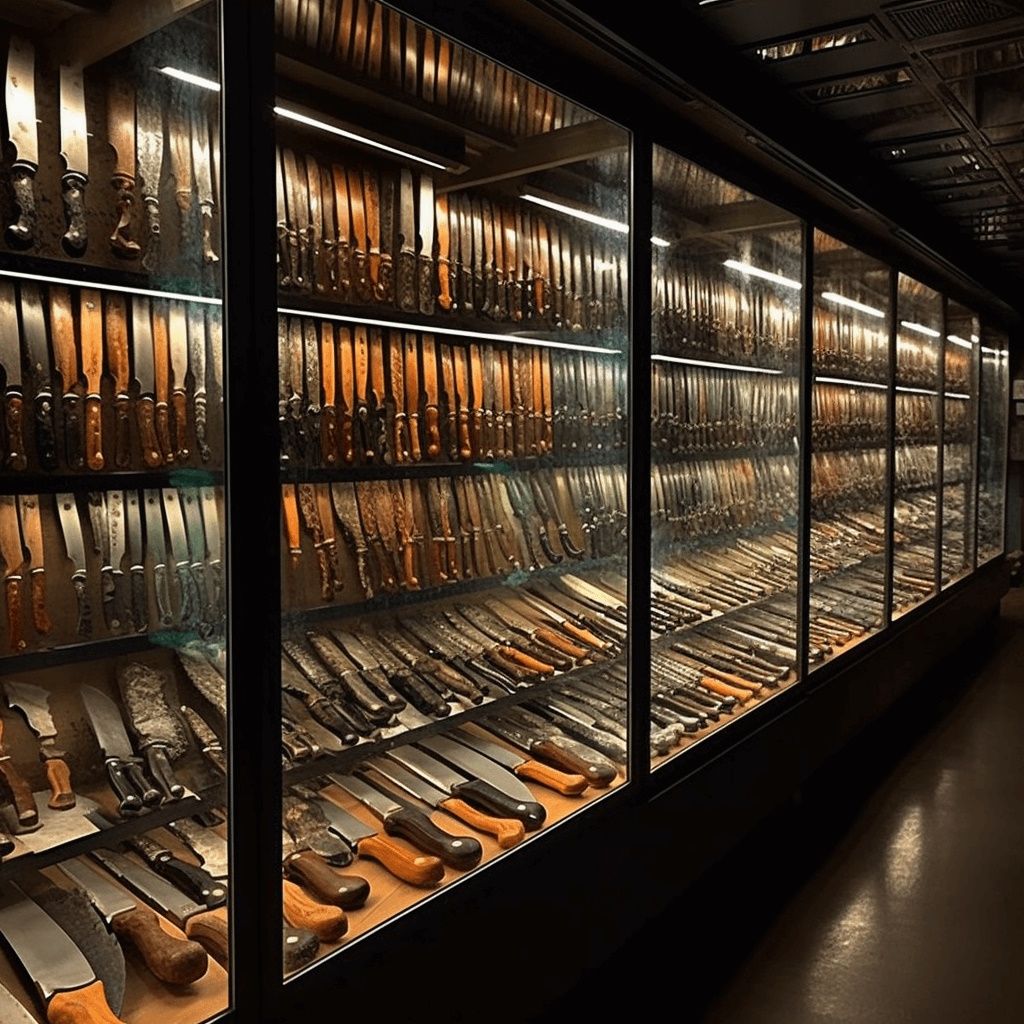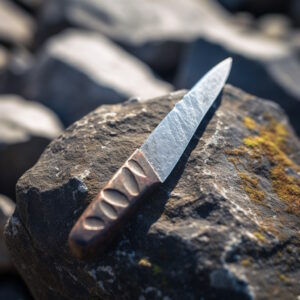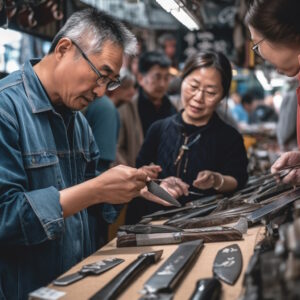Welcome! Go to your Account

Introduction
Welcome to the world of collectible knives, a fascinating universe where history, craftsmanship, and market trends converge. Whether you’re a seasoned collector or just beginning your journey into the realm of knife collecting, this guide, brought to you by Knife Enthusiast, is designed to provide you with a comprehensive understanding of the field. From the history of knives, and determining their value, to tips for buying and selling, we’ll walk you through everything you need to know to make informed decisions and appreciate the artistry of these objects.

The Fascinating History of Collectible Knives
The earliest knives and their evolution
Knives have been an integral part of human evolution, dating back to prehistoric times when early hominids used sharp-edged stones for hunting and processing food. As civilizations advanced, so did the craftsmanship and use of knives. For instance, the ancient Egyptians crafted knives from copper, which were often decorated with ornate designs, reflecting the owner’s status in society.
Over the centuries, the knife has evolved, with regions worldwide developing distinctive designs and techniques, from the Damascus steel blades of the Middle East to the samurai swords of Japan. Yet, regardless of their origins, all these knives bear witness to the human ingenuity and history of the times they were created in, making them desirable items for collectors.

Famous knives in history
Several knives have made their mark in history, both in their construction and their historical significance. For instance, the Bowie knife, named after American pioneer James Bowie, is renowned for its size and strength. First appearing in the 19th century, the Bowie knife is a symbol of the American frontier and remains a coveted item in any knife collection.
Another famous knife is the Fairbairn-Sykes Fighting Knife, developed during World War II for British commandos. Its design, which emphasizes speed and ease of use, had a significant influence on subsequent military and utility knives.
Collecting such historically significant knives not only adds value to a collection but also provides a tangible connection to the past.

What Makes a Knife Collectible?
Age and rarity
One of the key factors that make a knife collectible is its age. Antique knives, particularly those that have survived in good condition, are highly sought after by collectors. Similarly, the rarity of a knife – whether due to limited production, unique design, or association with a significant event or person – can increase its desirability and value.
Manufacturer and brand
The brand or manufacturer of a knife plays a crucial role in its collectability. Knives made by well-known and respected manufacturers often hold their value well and are more likely to be collectible. Brands such as Case, Buck, and Victorinox, for example, have long histories of producing high-quality knives and have a dedicated following among collectors.
Condition and original packaging
The condition of a knife is paramount when considering its collectability. Knives that are in mint or near-mint condition, especially those with their original packaging, are typically more valuable than those showing signs of wear or damage. Collectors often use a rating system to describe a knife’s condition, ranging from ‘mint’ (perfect, like new) to ‘poor’ (heavy wear or damage).
Understanding the Value of Collectible Knives
Factors influencing knife values
A knife’s value is determined by a combination of factors including its age, rarity, brand, condition, and demand in the marketplace. For instance, a rare knife from a renowned manufacturer in perfect condition will likely fetch a high price. However, if there’s little demand for that specific model or brand, its value may be lower.
Moreover, certain features or characteristics can enhance a knife’s value. Special materials used in the handle or blade, such as exotic woods, ivory, or Damascus steel, can add to a knife’s desirability. Similarly, limited edition models or knives associated with a particular event or famous person can also command higher prices.
How to appraise a collectible knife
Appraising a collectible knife involves a thorough examination of its physical condition and an evaluation of its rarity and desirability. You’ll need to examine the knife closely for any signs of damage or wear, check for any identifying marks or signatures, and note any unique or special features.
When evaluating rarity and desirability, you’ll need to do some research. Consult knife collecting guides, join online knife forums, and visit knife shows to learn about trends in the market and get a sense of what collectors are currently seeking.
Professional appraisers can also be a valuable resource. They have expertise in evaluating knives and can provide an unbiased estimate of a knife’s value.
Tips for Buying Collectible Knives
Where to buy
Collectible knives can be found in a variety of places. Antique stores, estate sales, and auctions are traditional sources, while online marketplaces and specialty knife stores like Knife Enthusiast also offer a wide selection. Knife shows and conventions are another excellent source, offering the chance to see a wide range of knives in person and meet other collectors and experts.
Questions to ask the seller
When buying a collectible knife, it’s important to gather as much information as possible. Ask about the knife’s history, including its age, brand, and any relevant details about its condition or usage. If it’s a rare or valuable knife, ask for any documentation or proof of authenticity.
Verifying authenticity
Ensuring the authenticity of a knife is crucial, especially when investing in high-value or rare pieces. Research the brand and model, and familiarize yourself with any identifying marks or characteristics. For high-value purchases, consider seeking the opinion of a professional appraiser or expert.
Tips for Selling Your Knives
How to price your knife
Pricing your knife correctly is essential for a successful sale. Start by appraising its condition, rarity, and desirability. Compare similar knives currently on the market and note their selling prices. If you’re unsure, consider getting a professional appraisal.
Best platforms for selling
Choosing the right platform to sell your knife can significantly impact your success. Online marketplaces are convenient and reach a broad audience, but be aware of their fees and policies. Knife shows and conventions offer the opportunity to sell directly to other enthusiasts and collectors. Specialty stores or auction houses can also be good options, particularly for high-value or rare knives.
Packaging and shipping advice
Proper packaging is crucial to protect the knife during shipping. Use bubble wrap or foam to secure the knife and prevent movement within the box. For valuable knives, consider insuring the shipment. Always provide tracking information to the buyer.
Conclusion
Collecting knives is a journey into the past, a celebration of craftsmanship, and a potentially rewarding investment. As with any collecting field, knowledge is power. The more you learn about the history, value, and market trends of collectible knives, the more confident and successful you’ll be as a collector.